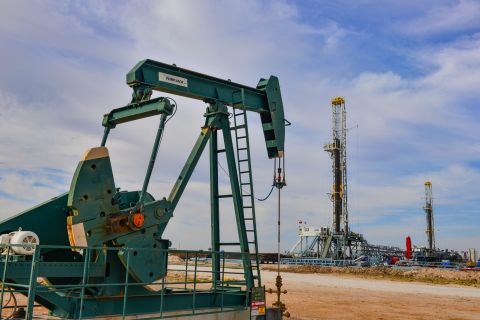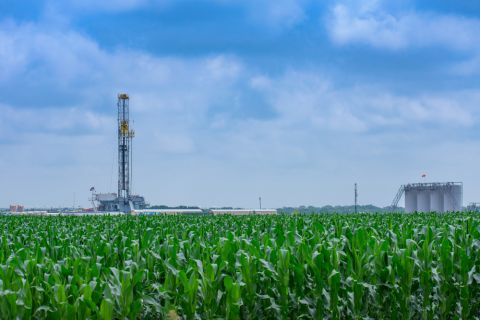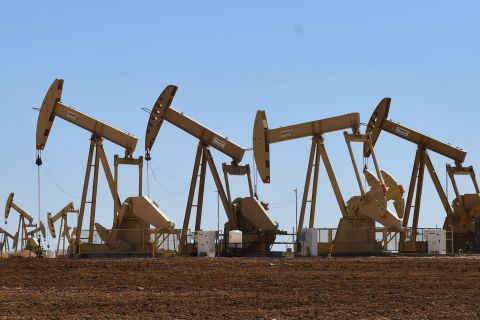Paraphrasing “The Rime of the Ancient Mariner” written by the English poet Samuel Taylor Coleridge from 1797 to 1798, where he described being on the ocean – “Water, water, everywhere, nor any drop to drink,” the hydraulic fracturing industry has to advance its water management technologies in areas such as West Texas, where water is a scarce commodity.
When I was in journalism school at Oklahoma State University in 1973, a man did a presentation on water or the lack thereof. I remember clearly what he said. He started his talk by saying, “I’ve got some good news and some bad news. First, the good news is that by the turn of the century (2000), we will be drinking sewage water. The bad news is there won’t be enough of it.”
Just how prophetic was he? Residents in Odessa, Big Spring, Snyder, Midland, and Stanton in West Texas began to get recycled sewage water earlier this year. The “clean” water is produced by the Colorado River Municipal Water District’s wastewater plant in Big Spring. The sewage water is run through microfilters and reverse osmosis before being disinfected with hydrogen peroxide and ultraviolet light. However, just the thought of drinking recycled sewage water is having a lot of residents swear off tap water.
Even though the oil and gas industry uses a small percentage of total water produced in the US, every drop of fresh water is becoming more precious. With the drought along some river systems in Texas, the battle for water resources is heating up. Rice farmers along the Gulf Coast have seen water for their crops dry up. There is increasing saltwater incursion into river estuaries as less fresh water reaches the coast.
The shortage of fresh water is a problem that the industry continues to address, but even more effort is needed to make water supplies more readily available to the communities and ecosystems where the industry works. How does the industry make a dent in its water use? In the October 2013 issue of E&P, Steve Monroe, Baker Hughes, pointed out that 290 Bbbl of brine, brackish, and otherwise unusable water were produced in 2010. The majority of that water is pumped into saltwater injection wells throughout the producing areas. Some of the water is treated and used as hydraulic fracturing fluid. There is a solution in there somewhere. Water management is high on the list of technologies for service companies and operators. However, drought in the western US is pushing this issue to the top of the list. As the cost of water gets higher as water gets scarcer, a lot of industries, cities, and farms will have to find more options. The other thing I remember from that 1973 presentation is that he said the next big war won’t be over energy; it will be over water. Let’s hope technology keeps that from happening.
Recommended Reading
Mighty Midland Still Beckons Dealmakers
2024-04-05 - The Midland Basin is the center of U.S. oil drilling activity. But only those with the biggest balance sheets can afford to buy in the basin's core, following a historic consolidation trend.
Enverus: 1Q Upstream Deals Hit $51B, but Consolidation is Slowing
2024-04-23 - Oil and gas dealmaking continued at a high clip in the first quarter, especially in the Permian Basin. But a thinning list of potential takeout targets, and an invigorated Federal Trade Commission, are chilling the red-hot M&A market.
Life on the Edge: Surge of Activity Ignites the Northern Midland Basin
2024-04-03 - Once a company with low outside expectations, Surge Energy is now a premier private producer in one of the world’s top shale plays.
EIA: Permian, Bakken Associated Gas Growth Pressures NatGas Producers
2024-04-18 - Near-record associated gas volumes from U.S. oil basins continue to put pressure on dry gas producers, which are curtailing output and cutting rigs.
CEO Darren Woods: What’s Driving Permian M&A for Exxon, Other E&Ps
2024-03-18 - Since acquiring XTO for $36 billion in 2010, Exxon Mobil has gotten better at drilling unconventional shale plays. But it needed Pioneer’s high-quality acreage to keep running in the Permian Basin, CEO Darren Woods said at CERAWeek by S&P Global.





